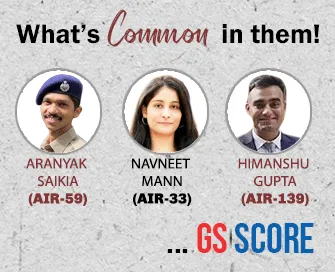

22nd May 2025 (12 Topics)
Mains Issues
Context
In response to Pakistan’s false narrative following India’s precision counter-terror operations under Operation Sindoor, India has launched a global diplomatic outreach involving an all-party delegation visiting 32 key countries. The initiative seeks to build international consensus against terrorism, expose Pakistan’s propaganda, and reinforce India’s position as a responsible global actor.
Operation Sindoor Diplomacy
- Strategic Country Selection:
- Basis of Selection: Countries chosen are either current/incoming members of the UN Security Council (UNSC) or hold significant geopolitical and diplomatic weight.
- Goal: To ensure that India’s position is understood and supported in key global decision-making bodies, especially in the context of counter-terrorism.
- Additional Aim: Strengthening diplomatic ties and reinforcing international trust in India’s commitment to peace and rule-based global order.
- All-Party Delegation – A Show of Unity
- The delegations include MPs from BJP, JD(U), CPI(M), Congress, and former diplomats – demonstrating rare bipartisan consensus in India’s foreign policy.
- This enhances credibility abroad and sends a strong, united message that the fight against terrorism transcends domestic politics.
- Targeted Engagement Strategy
- Each delegation will visit strategically important countries across Asia, Europe, and other regions.
- Engagements include meetings with Government officials (e.g., ministers, legislators, Think tanks, Strategic community, Media and civil society
- Countering Pakistan’s Narrative
- The delegation strongly rebutted Pakistan’s false accusation that Indian strikes harmed civilians.
- Leaders emphasized that India’s strikes were highly precise, targeted only terrorist infrastructure, and conformed to international norms and proportionality.
- This is part of a broader effort to delegitimize Pakistan’s use of terrorism as state policy.
- Role of Foreign Secretary & Diplomacy Infrastructure:
- Foreign Secretary Vikram Misri personally briefed the delegations to align India’s messaging.
- The Ministry of External Affairs is coordinating the outreach to ensure strategic coherence and diplomatic effectiveness.
Implications and Long-Term Strategic Objectives
- Global Support for Counter-Terrorism
- The initiative aims to forge a broad global consensus against terrorism and isolate its sponsors diplomatically.
- Enhances India’s standing in global institutions like the UN, FATF, and multilateral groupings.
- Boost to India’s Narrative Diplomacy
- Narrative diplomacy involves shaping global perception and countering disinformation – increasingly critical in modern geopolitics.
- India is moving from reactive to proactive foreign policy messaging, positioning itself as a victim of terror and a responsible power.
- Strengthening Multilateral Credentials
- This outreach supports India’s bid for permanent membership in the UNSC by showcasing its commitment to international peace and global security.
- Reinforces India’s role as a net security provider in the Indo-Pacific and a leading advocate of rule-based international order.


Mains Issues
Context
India has not released official poverty estimates since the 2011–12 Household Consumption Expenditure Survey (HCES). In this vacuum, multiple unofficial and often contradictory estimates have emerged. The paper by Himanshu et al. employs an alternative methodology—survey-to-survey imputation—to evaluate poverty trends in India from 2011–12 to 2022–23 and offers evidence of significant deceleration in poverty reduction during this period.
Key Findings of the Study
- Between 2004–05 and 2011–12, poverty declined substantially from 37% to 22%.
- From 2011–12 to 2022–23, the decline was marginal—from 22% to approximately 18%.
- In absolute terms, the number of poor decreased only slightly from 250 million to 225 million in the past decade.
Methodological Approaches to Estimate Post-2011 Poverty
- NSSO-Based Estimates using UMPCE
- Utilises Usual Monthly Per Capita Consumption Expenditure (UMPCE) derived from a single survey question.
- Adopted in NSSO surveys (71st round onwards) and Periodic Labour Force Surveys (PLFS).
- Lacks compatibility with older, detailed multi-question surveys (like HCES 2011–12).
- Estimated poverty: 26–30% in 2019–20.
- Limitation: Oversimplification due to single-question data collection.
- National Accounts-Based Approach (Surjit Bhalla et al., 2022)
- Uses Private Final Consumption Expenditure (PFCE) data from National Accounts Statistics.
- Applies PFCE growth to scale 2011–12 HCES data to post-2011 years.
- Limitation: Assumes uniform consumption growth, potentially overlooking distributional changes and inequality.
- Survey-to-Survey Imputation (Used by the Authors)
- Combines data from related surveys to estimate missing information.
- Specifically uses the Employment-Unemployment Survey (EUS, 2011–12) and PLFS (post-2017), due to similar sampling and methodology.
- Incorporates Tendulkar Committee poverty lines, as opposed to the World Bank poverty thresholds.
- Estimates calculated at the state level or using state-fixed effects for improved granularity.
- Conclusion: Poverty declined only marginally post-2011–12 despite earlier rapid decline.
State-Level Trends
- Significant progress in poverty reduction noted in Uttar Pradesh.
- Limited or negligible progress in traditionally poor states like Jharkhand and Bihar.
- Stagnation in poverty reduction in large states such as Maharashtra and Andhra Pradesh.
Corroborating Evidence for Slower Poverty Reduction
- GDP growth rate slowed from 9% (2004–05 to 2011–12) to 5.7% (2011–12 to 2022–23).
- Real rural wage growth decelerated from 13% annually (2004–05 to 2011–12) to 2.3% (2011–12 to 2022–23).
- Structural shift reversal: After decades of decline in agricultural employment, 68 million workers re-entered agriculture post-2017–18, suggesting distress-driven employment patterns.
- Agricultural productivity slowed in recent years due to workforce re-concentration, thereby limiting income growth and poverty reduction.
Significance and Policy Implications
- The study underlines the urgency of releasing official poverty data using updated and consistent methodology.
- It suggests that while economic growth remains a key factor in poverty reduction, it must be inclusive and accompanied by sectoral employment and wage gains.
- It calls for a renewed focus on rural development, wage growth, and social sector investments.
- The lack of robust and regular data hampers evidence-based policymaking in poverty alleviation.
Government Programmes for Poverty Alleviation in India:
|
PYQ:
|


Mains Issues
Context
India and the United States have had a turbulent trade relationship over the last decade, with multiple frictions related to tariffs, market access, and unilateral trade measures. A major point of contention has been the U.S. decision to impose 25% tariffs on steel and aluminium imports—first in 2018 under President Trump, and reinstated in 2025 during his second term. In response, India has now notified the WTO of its intent to impose retaliatory tariffs worth $7.6 billion on U.S. imports.
Key Highlights:
- In March 2025, U.S. President Donald Trump reimposed 25% tariffs on all imported steel and aluminium, ending all exemptions.
- India, citing WTO norms, notified its intent to impose retaliatory tariffs worth $7.6 billion on U.S. goods.
- The move mirrors earlier developments in 2018–19, when India retaliated to U.S. tariffs and GSP withdrawal by imposing tariffs on 28 U.S. products like walnuts and apples.
- The new tariffs by India will come into effect 30 days after notification (early June 2025).
India’s Position and WTO Standpoint
- India argues the U.S. tariffs are disguised safeguard measures and not genuine national security measures as claimed by the U.S.
- India claims the U.S. has violated WTO norms, especially the Agreement on Safeguards (AoS) and the GATT 1994, by not engaging in prior consultation.
- India, along with the EU, China, and the U.K., contests the U.S. interpretation, stating that the move is protectionist in nature.
Impact on Indian Industry:
- Past data shows steep decline in steel exports to the U.S. (down nearly 48% in FY20).
- Industry fears renewed loss of competitiveness due to higher export costs.
- SAIL and other steel manufacturers have warned of increased global volatility and disruption of trade flows.
- ASMA (Aluminium body) supports the move, stating that reciprocal action will help level the negotiating field.
Economic Implications:
- Globally, tariffs contribute to input cost inflation, supply chain disruptions, and trade diversion.
- The U.S. Fed's 2019 study observed that earlier tariffs only gave a “small boost” to manufacturing jobs, but were offset by higher costs and retaliatory measures.
- India's retaliation shows a more assertive trade posture, aligning with ‘Atmanirbhar Bharat’ and ‘Make in India’
Strategic and Diplomatic Dimensions:
- India’s move reflects its evolution as a rules-based trade actor advocating for multilateralism, unlike the U.S.'s increasing unilateralism.
- The issue could stall negotiations on broader trade agreements, but may also push both sides toward a Mutually Agreed Solution (MAS).
- India is signaling that it will not compromise on politically sensitive sectors, and is ready to use WTO mechanisms to protect its interests.
Way Forward
- A diplomatic resolution remains possible through WTO consultations or bilateral negotiations.
- India must balance its strategic relationship with the U.S. with the need to protect domestic manufacturing.
- Simultaneously, India should strengthen its engagement in regional trade groupings (like IPEF, RCEP alternatives) to diversify markets.
World Trade Organization (WTO)
Mandate and Objectives:
Core Principles:
Key Agreements:
Dispute Settlement Mechanism (DSM):
|
PYQ:
|


Mains Issues
Context
A recent study published by researchers at ETH Zurich, Switzerland, revealed that tropical cyclones are expected to intensify and expand their geographical reach due to climate change, particularly under the SSP5-8.5 scenario. The findings highlight increasing risks to ecosystems such as mangroves and regions previously unaffected by cyclones, making it a significant concern in climate risk assessment and conservation planning.
Findings from ETH Zurich Studies:
Cyclones and Ecoregions:
- Used the CLIMADA risk modeling tool and datasets like STORM-B/C to simulate cyclone risk for 1980–2017 and 2015–2050.
- Ecoregions were classified into:
- Resilient: Regularly exposed, recover quickly.
- Dependent: Ecosystems shaped by frequent cyclones.
- Vulnerable: Rarely disturbed, poor recovery.
- Projected decline in recovery periods:
- g., from 19 years to 12 years between high-intensity storms in resilient regions.
- New vulnerable regions predicted: East Asia, Central America, parts of Oceania.
Impact on Mangroves:
- Assessed global mangrove risk due to tropical cyclones and sea-level rise.
- Key risks modeled:
- Hazard (intensity/frequency of cyclones)
- Vulnerability (adaptive capacity of mangroves)
- Exposure (mangrove overlap with high-risk zones)
- Under SSP5-8.5:
- 56% of mangrove areas at high to severe risk by 2100.
- Southeast Asia could lose 52–78% of its mangroves.
Importance of Mangroves
- Carbon sequestration: Store 4–5x more carbon than terrestrial forests.
- Storm protection: Natural barriers reducing cyclone impact.
- Fish nurseries: Enhance coastal biodiversity and livelihoods.
- Soil conservation: Prevent erosion and saltwater intrusion.
Implications
- Ecological tipping points: Cyclone-hit areas may not recover, transforming ecosystems permanently.
- New cyclone belts: Likely to shift poleward, threatening non-tropical regions.
- Biodiversity loss: Threatens both terrestrial and marine species.
- Disaster preparedness: Demands climate-resilient planning and early-warning systems.
Key Concepts & Terminologies
These are scenario frameworks used in climate modeling to study future global developments.
SSP5-8.5 is often considered a "worst-case scenario" where radiative forcing reaches 8.5 W/m² by 2100, leading to extreme global warming. Radiative Forcing
|
PYQ:Q. “Tropical cyclones are largely confined to South China Sea, Bay of Bengal and Gulf of Mexico. Examine the climatic conditions responsible for the formation of tropical cyclones in these regions.” (2021) |


Prelims Articles
Context
In May 2025, former US President Donald Trump announced a new $175-billion missile defence initiative called the ‘Golden Dome’, with General Michael Guetlein of the US Space Force leading the program. The system is inspired by Israel’s Iron Dome, but seeks to be far more expansive — deploying space-based interceptors and satellites to counter missile threats, especially ICBMs from adversaries like China and Russia.
Features of the Golden Dome:
- Space-Based Interceptors:
- Unlike existing systems, the Golden Dome proposes to deploy space-based weapons, capable of intercepting enemy missiles moments after launch.
- Thousands of small satellites in low Earth orbit (LEO) would form an active, defensive “shield”.
- Technological Leap:
- This would mark a major shift from reconnaissance-based space systems to combat-capable orbital platforms.
- The move revives Cold War-era concepts like Star Wars (Strategic Defense Initiative) proposed by Reagan.
- Integration Across Domains:
- Designed as a multi-domain system:
- Land-based radar & launchers
- Sea-based platforms
- Space-based detection and interception
Comparison with Israel’s Iron Dome:
|
Feature |
Iron Dome (Israel) |
Golden Dome (USA) |
|
Range |
Short-range (70 km approx.) |
Intercontinental (against ICBMs) |
|
Platform |
Ground-based (radar + Tamir interceptors) |
Multi-domain (ground + sea + space) |
|
Threat Type |
Rockets, artillery shells, drones |
ICBMs, hypersonic missiles |
|
Guidance System |
Radar-based |
Radar + Satellite-based AI tracking |
|
Scale |
Suited to a small country like Israel |
Meant for global projection and homeland defence |


Prelims Articles
Context
The BrahMos missile system, a key component of India’s precision-strike arsenal, is being upgraded. Two parallel developments are ongoing which includes BrahMos-NG (Next Generation): A lighter, compact air-launched version and Extended-range BrahMos: Range increased from 290 km to 450 km, with work in progress to achieve 800 km.
BrahMos-NG (Next Generation):
Key Features
- Development Status: It is currently under advanced stages of development; flight testing expected within one to two years.
- Weight and Dimensions:
- It is significantly lighter than the existing air-launched BrahMos.
- It is expected to weigh approximately half as much as the current version.
- Compatibility:
- It is designed for integration with a wider range of fighter aircraft, including LCA Tejas, Rafale, and MiG-29.
- Intended to be carrier-friendly due to its compact size.
- Enhanced Capabilities: It will retain supersonic speed while offering better maneuverability, ease of deployment, and reduced radar signature.
Strategic Implication:
- It will enable wider deployment across fighter fleets, even on smaller aircraft like the Light Combat Aircraft (LCA).
- It enhances air strike capability without compromising speed or precision.
BrahMos Supersonic Cruise Missile: Key Features
|


Prelims Articles
Context
On May 22, 2025, the Indian Navy formally inducted INSV Kaundinya, a reconstructed stitched sail ship based on ancient Indian maritime traditions, at a ceremonial event at Naval Base, Karwar. The vessel is a replica of a 5th-century ship depicted in Ajanta Cave paintings and is part of a tripartite cultural-military initiative to revive and showcase India’s shipbuilding heritage.
About INSV Kaundinya:
- INSV Kaundinya is a stitched sail ship, an ancient method of ship construction where wooden planks are stitched together using coir rope, coconut fibre, and natural resin, without nails or modern fasteners.
- The name "Kaundinya" honours the legendary Indian mariner believed to have sailed to Southeast Asia, symbolising India’s maritime legacy.
Historical and Cultural Roots:
- The vessel is a recreation of a ship depicted in Ajanta cave murals, dating back to the 5th century CE.
- The Ajanta caves, located in Maharashtra, are a UNESCO World Heritage Site known for their elaborate frescoes depicting scenes from the Jataka tales and ancient Indian life, including maritime trade.
Project Collaboration and Execution:
- The ship was built through a tripartite agreement signed in July 2023 between:
- Union Ministry of Culture
- Indian Navy
- Hodi Innovations (a maritime heritage organisation)
- The construction was funded by the Ministry of Culture as part of efforts to revive traditional technologies.
- Master shipwright Babu Sankaran from Kerala led the traditional craftsmanship team


Prelims Articles
Context
Context: On May 22, 2025, Union Environment Minister Bhupender Yadav announced a significant rise in the Asiatic lion population in India, which has increased from 674 in 2020 to 891 in 2025. This 32% growth is being hailed as a major milestone in India's wildlife conservation efforts, attributed to the proactive implementation of Project Lion and coordinated conservation strategies led by the Government of India.
Asiatic Lions:
- The Asiatic lion (Panthera leo persica), also known as the Persian lion or Indian lion, is a subspecies of lion that is found exclusively in India. Its natural habitat is confined to the Gir National Park and Wildlife Sanctuary, located in the state of Gujarat.
- Historically, Asiatic lions were distributed across West Asia and the Middle East. However, due to widespread hunting and habitat destruction, they have become extinct in these regions, making India the last remaining refuge for this species.
Current Population and Distribution:
- According to the 2020 lion census conducted by the Gujarat Forest Department, the population of Asiatic lions stood at 674 individuals, dispersed across an area of approximately 30,000 square kilometres, spanning nine districts and 53 talukas of the Saurashtra region.
- As a result of sustained conservation efforts, the International Union for Conservation of Nature (IUCN), in 2025, downlisted the status of the Asiatic lion from "Endangered" (2008) to "Vulnerable" on its Red List of Threatened Species.
Asiatic Lion vs African Lion: Comparative Features
|
Feature |
Asiatic Lion (Panthera leo persica) |
African Lion (Panthera leo melanochaita) |
|
Size |
Slightly smaller |
Generally larger |
|
Mane |
Shorter and less developed |
Fuller and denser |
|
Social Behaviour |
Males typically remain with the pride |
Males often leave the pride except for mating or hunting |
|
Habitat |
Dry deciduous forests (India only) |
Savannas, shrublands, deserts |
|
Distribution |
Restricted to Gir, Gujarat |
Widespread across Sub-Saharan Africa |
|
IUCN Status |
Vulnerable |
Vulnerable |
|
CITES Listing |
Appendix I |
Appendix II |
|
Legal Protection in India |
Schedule I, Wildlife (Protection) Act, 1972 |
Not applicable |
|
Major Threats |
Inbreeding, diseases, habitat loss, human-wildlife conflict |
Hunting, habitat loss, conflict |
Major Conservation areas:Gir National Park and Wildlife Sanctuary:
|
PYQ:Consider the following statements: (2019)
Which of the statements given above is/are correct?
|


Prelims Articles
Context
On May 21, 2025, Banu Mushtaq’s short story collection Heart Lamp won the International Booker Prize. She became the first Kannada writer to receive this prestigious international literary honour.
- Landmark Recognition for Kannada Literature
- Heart Lamp’s victory is a historic moment, not just for the author but for Kannada literature as a whole.
- It signals global acknowledgement of Indian regional voices in literary translation.
- Subtle Yet Profound Storytelling
- The stories in Heart Lamp are noted for their quiet narrative strength rather than dramatic declarations.
- Mushtaq achieves a rare emotional depth through clarity, empathy, and subtlety.
- Themes Rooted in the Everyday
- The stories are set in familiar, domestic environments — kitchens, prayer rooms, narrow by-lanes.
- These settings reflect the intricacies of ordinary lives and the quiet struggles within them.
- A Literature of Witness, Not Protest
- Rather than overt activism, Mushtaq’s work bears silent witness to social and emotional realities.
- Her writing invites reflection, relying on its sincerity rather than spectacle.
- Impact on Indian Literature in Translation
- The recognition of Heart Lamp underscores the global relevance of translated Indian works, particularly from non-Hindi languages.
- It expands the scope of Indian literature on the world stage, validating nuanced regional voices.
- Collaboration and Translation Excellence
- The book’s impact is also attributed to its skilful translation, which preserved the texture and rhythm of the original Kannada prose.
- Translator Deepa Bhasthi played a key role in rendering Mushtaq’s vision accessible to international readers.
- Literary Significance of the Win
- The award is seen not only as a personal achievement but a quiet revolution in literary circles.
- It redefines what powerful storytelling looks like — measured, introspective, and deeply rooted in local realities.
International Booker Prize:
|


Editorials
Context
May 22 is observed as the International Day for Biological Diversity, commemorating the adoption of the Convention on Biological Diversity (CBD) in 1992. The theme for 2025 is “Harmony with Nature and Sustainable Development.” Despite global frameworks like the Kunming-Montreal Global Biodiversity Framework (GBF) and growing urbanisation, urban biodiversity continues to decline due to unplanned development and ecological neglect.
Urban Biodiversity: Value and Vulnerability
- Environmental Services of Urban Greenery: Urban trees help in climate regulation, pollution control, flood management, and carbon sequestration. For instance, a 10-metre tree belt can reduce noise pollution by 5 dB and lower local temperatures, as shown in cities like Frankfurt.
- Economic Value of Urban Trees: According to Professor Theodore Endreny, urban tree cover offers ecosystem services valued at nearly ?8 crore per square kilometre annually, highlighting their significant economic utility.
- Forest Cover Deficiency in Indian Cities: As per the Forest Survey of India (2023), average urban forest cover in Indian cities is only 10.26%, with Chennai and Hyderabad witnessing continued loss of green cover, indicating urgent need for greening interventions.
Policy Frameworks and Urban Greening Initiatives
- Global and National Policy Measures: The GBF’s Target 12 promotes enhancing green and blue spaces in urban planning. The UN Habitat’s 3-30-300 rule also mandates local green accessibility and tree canopy density to enhance urban biodiversity.
- Urban Biodiversity Index and Planning: The City Biodiversity Index evaluates native biodiversity, ecosystem services, and governance. Based on this, cities like Kochi and Gangtok are developing Local Biodiversity Strategies and Action Plans (LBSAPs).
- Local Initiatives and Innovations: The Chennai Koyambedu greening model, mimicking a three-tiered forest system, led to the regeneration of 141 plant species and numerous bird and butterfly species, proving the effectiveness of decentralised ecological restoration.
Challenges and the Way Forward
- Urban Expansion and Biodiversity Loss: The rapid urbanisation leads to the destruction of home gardens, encroachment of wetlands, and reduced ecological integrity of urban water bodies, as seen in Chennai and Bengaluru.
- Policy Mandates for Urban Greening: The planning authorities like the Greater Chennai Corporation could mandate planting of at least five trees per 2,400 sq. ft plot and promote roof/kitchen gardens to decentralise urban greening efforts.
- Need for Collective Stakeholder Action: City biodiversity conservation requires strict legal enforcement, community engagement, and corporate responsibility. The Supreme Court's action in the Hyderabad Kancha Gachibowli case highlights the judiciary’s role in protecting urban biodiversity.
Practice Question:
Q. "Urban areas, though densely populated and rapidly expanding, hold immense potential for biodiversity conservation." Examine this statement in light of recent global frameworks and suggest a sustainable strategy for integrating biodiversity into urban planning.


Editorials
Context
In a major breakthrough in India’s anti-Maoist campaign, CPI (Maoist) General Secretary Nambala Keshava Rao, alias Basavaraju, was killed along with 26 cadres in a security operation in Chhattisgarh. The incident marks a potential turning point in the fight against left-wing extremism (LWE), especially in strongholds like Bastar and Dantewada.
Changing Dynamics of Maoist Insurgency
- Historical Significance of Basavaraju: Basavaraju masterminded several deadly attacks, including the 2010 Dantewada massacre (76 CRPF jawans) and the 2013 Jhiram Ghati ambush (Congress leadership in Chhattisgarh). His death signals a decapitation of Maoist leadership.
- Erosion of Maoist Strongholds: Once dominant in Andhra Pradesh and Telangana, LWE has retreated, with Chhattisgarh’s forested districts (Bastar, Narayanpur, Bijapur, Dantewada) emerging as the final bastions.
- Government’s Offensive Strategy: Since December 2023, the Vishnu Deo Sai-led Chhattisgarh government has intensified coordinated operations with central forces, leading to record Maoist casualties (219 in 2023) and mass surrenders (800+ Maoists).
Strategic Interventions and Reforms
- Enhanced Security Infrastructure: Establishment of security base camps in remote areas has ended the security vacuum. Better road connectivity and mobile infrastructure have improved state presence in inaccessible regions.
- Shift from Armed Civilians to Institutional Response: Earlier reliance on armed civilian militias (e.g. Salwa Judum) backfired. Current policy emphasizes professional security forces and state welfare.
- Rehabilitation of Surrendered Maoists: The state provides housing under PM Awas Yojana, vocational training, and incentivized private employment opportunities for former Maoists to reintegrate them into society.
The Way Forward – Security Plus Development
- Maintaining Security Vigilance: Despite Basavaraju’s death, LWE ideology and remnants still exist. The Centre and state must remain vigilant and avoid premature complacency.
- Strengthening the Development Agenda: Lasting peace can only come through inclusive development. Welfare measures, infrastructure, and governance reforms must continue to erode the appeal of extremism.
- Deepening Community Engagement: Empowering local tribal communities through participatory governance, forest rights implementation, and trust-building initiatives is essential to isolate extremist influence and sustain peace.
Practice Question:
Q. "With reference to the recent killing of top Maoist leaders in Chhattisgarh, evaluate the evolution of India’s counter-insurgency strategy. How can the state balance security with inclusive development to end Left-Wing Extremism?"


Editorials
Context
A recent controversy involving public comments on the Pahalgam military operation and Colonel Sofiya Qureshi has reignited debate on India’s commitment to the liberal norm of free speech. While one citizen faced arrest, another escaped action, exposing inconsistencies in upholding Freedom of Expression (FoE) and its implications for Indian democracy.
Challenges to Free Speech in India
- State as a Flawed Guarantor of Freedom of Expression (FoE): Theoretically, the state is expected to protect free speech, but in practice, it has designed legal instruments over decades to restrict it—beginning with the First Amendment and now justified through national interest, defamation, or public order.
- Misuse of Constitutional Provisions: Legal and judicial history shows that freedom of expression is often treated as a conditional concession, not a right. The idea of ‘hurt sentiments’ and preventive measures are frequently weaponized to silence dissenting voices.
- Uneven Enforcement and Political Bias: Two citizens commented on the same issue—one faced arrest, the other did not—reflecting not just legal ambiguity but a politicized application of the law, dependent on who exercises the right.
Systemic Myths Undermining Freedom of Expression (FoE):
- Myth of Legal Safeguards: The legislation and jurisprudence remain vague, leaving citizens at the mercy of state interpretation. Political parties switch stances on FoE depending on whether they are in power or opposition.
- Myth of Judicial Clarity: Courts often issue ambiguous opinions or symbolic sermons about Lakshman Rekhas (limits), leaving citizens unclear about what actually constitutes protected speech versus punishable speech.
- Myth of Equal Application: There is a growing trend of using FoE as a shield for hate speech. Some actors distort the liberal norm to justify targeting communities, under the false belief that all speech is equally protected.
Democracy and the Liberal Norm
- Freedom of Expression (FoE) as a Cornerstone of Democratic Values: Freedom of Expression is not an elite luxury—it is central to public reason, informed debate, and responsible electoral choices, which in turn are fundamental to the democratic process.
- Rise of Electoral Authoritarianism: Democracy is increasingly viewed only through the lens of elections and majorities, ignoring vital components like constitutional supremacy and institutional balance—both of which require robust FoE.
- Decoupling of Liberalism and Democracy: When citizens are jailed for speech or others demand such arrests, we undermine the deep connection between liberalism and democracy. The debate must be shifted from legalese to democratic necessity.
Practice Question:
Q. "In the context of recent controversies, critically examine the relationship between freedom of expression and democracy in India. Do legal restrictions and political biases threaten the liberal foundations of the Indian Constitution?"




